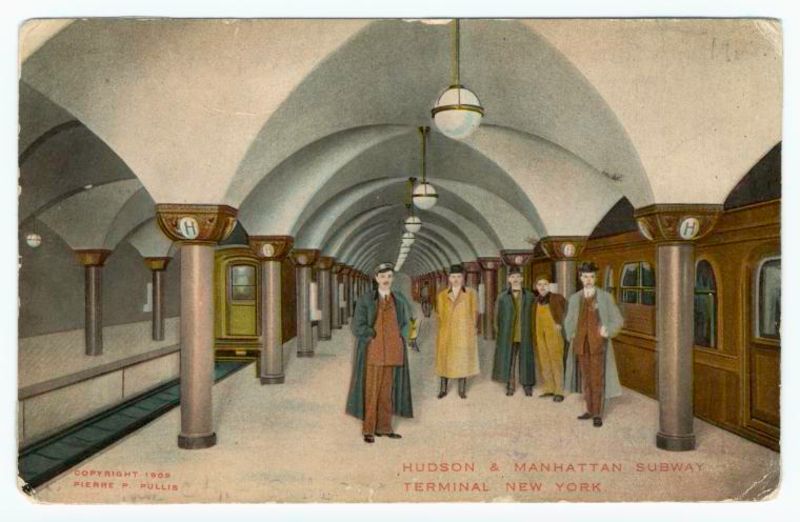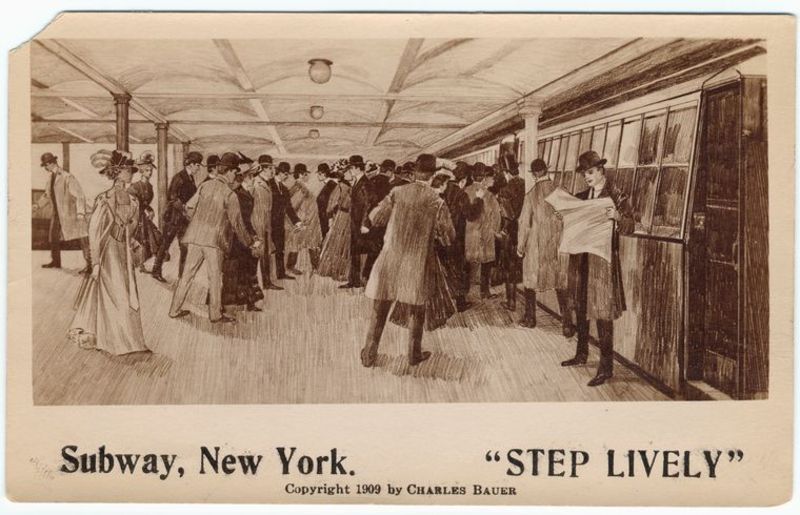Last-Minute NYC Holiday Gift Guide 🎁
We’ve created a holiday gift guide with presents for the intrepid New Yorker that should arrive just in time—


During the early days of New York City’s subway, a select number of cars were briefly for women only. The idea for women-only subway cars was proposed in 1909 by the Women’s Municipal League, which called for female-only cars on the Interborough Rapid Transit (IRT). The New York Times reported on a proposal made by Mrs. Frederick W. Longfellow to the Public Service Commission and General Manager Frank Hedley of the IRT that the last car on each subway train should be reserved exclusively for women, declaring that unescorted women “need the prowess of athletes to cope with crowds in the rush hour.” The plan was also proposed to help keep women safe from pickpockets and men with ill intentions while in public, but it never stuck long term.

The Hudson & Manhattan Railroad offered women-only cars between Manhattan and Hoboken (today’s PATH line) from April to July 1909. In trial runs, the last car of each train was known as a “Suffragette Car” (even though women didn’t earn the right to vote in New York until 1917) or a “Merry Widow Car.” On the second day of the test run, ridership rose 50% (3,000 vs. 2,000) during rush hours from 7 to 9 in the morning and 4:30 to 7:00 in the evening. Officials of the five-year-old IRT line then began considering the idea for the New York City subway but nixed it after months of discussion. During hearings held in March, there was “strong opposition.” Ida Husted Harper, the feminist author of The Life and Work of Susan B. Anthony, acknowledged that there were substantial problems for commuters: “It is an outrage for people to be subjected to what they have to endure in the way of transportation in New York.” But she also proclaimed:
“I am opposed to the plan principally because by setting aside one car for women, men would consider that all the rest of the train belonged to them. Then, when the overflow from this segregated car tried to get into the others, the men would put up the cry that women were encroaching on their domain. We are hearing entirely too much nowadays about ‘women’s invasion.’” Harper said that she was “constantly surprised at the number of men who do give up their seats and try to help women both in the subways and the surface cars,” and suggested that women instead rely on the “kindness and consideration” of the majority of the men.
Lillie Devereux Blake, a longtime suffragist and President of the Legislative League, said of the proposal: “I am opposed to it. I don’t think our New York men are such beasts that we can’t sit in the same car with them. I like men. Of course, they don’t give us all we want them to. They don’t let us vote, for instance, but they will in good time, and even now they’re pretty good to us. I think it would be most unpleasant if we had a car to ourselves.” Florence Kelley, Secretary of the National Consumers League, also testified that “The last thing in the world women want is to be segregated.”

Officials ultimately concluded that because many women were against segregated cars, the women-only subway cars were impractical and unnecessary. A 1909 New York Times article quoted a city official: “Almost an equal number of people (to the advocates of women’s cars) stated that men are the best protection that women have in a crowded car, and that they prefer to ride in cars where men and women are together, that while there are rare occasions when some brute will take advantage of the situation to insult a lady, on the other hand, the gentlemen are the best protection the ladies want against such conduct.”
The service was briefly revived in July 1958 on the Hudson & Manhattan Railroad. A new 44-seat air-conditioned, “baby blue” and “perfume-scented” car was placed in service during the rush-hour run on July 10 from Newark to New York City. Mrs. Vera Veseley reported the car was “marvelous” because she had more elbow room: “Men always spread out their newspapers and hog space,” but criticized the lack of mirrors, which would save women time by allowing them to apply makeup on the train rather than at home. Mrs. Corinne Rose commented that the blue leather seats would save her stockings from getting runs from the cane seats in the older cars. One woman, however, offered a dissenting opinion: “I enjoy riding with men more.”
In other countries, women-only subway cars aren’t just a thing of the past. They are still in use in Japan and have been used in China, India, Mexico, Germany, and other locations. Until 1977, there were women-only train cars in Britain and a proposal was made (and rejected) as recently as 2015 to bring women-only subway cars back to London. In New York City, the return of women-only subway cars has not been proposed to help curb subway crime. It remains a brief but interesting chapter of our subway history.
Next, check out 11 Vintage Subway Amenities that Should be Brought Back and Top 20 Secrets of the Subway
Subscribe to our newsletter